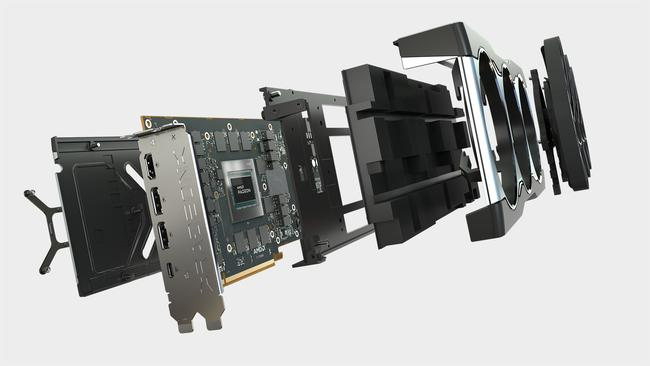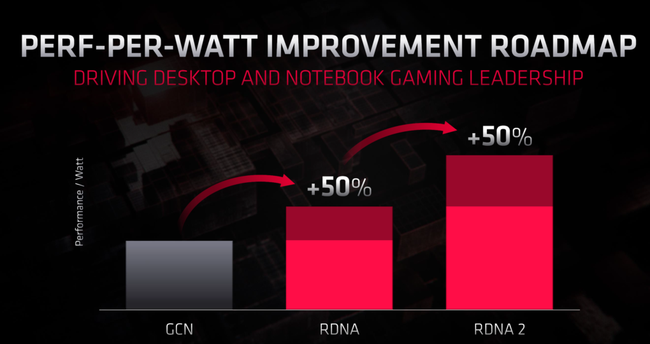Released as a distinct and more budget-oriented member of the RDNA 2 family, the AMD Radeon RX 6700 carved out its own space separate from its well-known XT sibling. Positioned as a formidable 1080p gaming card with an eye toward 1440p, this 10GB GPU now presents a unique value proposition in a market full of newer options. This comprehensive informational review provides a definitive analysis of the Radeon RX 6700.
This guide delves into the specific hardware, current gaming benchmarks, architectural features, and the overall viability of the 10GB RX 6700, offering the objective data needed to determine if this previous-generation GPU is a smart acquisition for your PC build today.
The AMD RX 6700 in 2025: A Quick Look
The Radeon RX 6700 is a last-generation graphics card. While less common than the XT model, it was notably adopted by AIB partners like Sapphire and PowerColor. Its production has ceased, making it almost exclusively available on the used market. It is here that the RX 6700 finds its relevance, often emerging as a powerful performance-per-dollar contender for budget-conscious gamers.

AMD RX 6700 vs. Key Competitors: Specification Comparison
To properly evaluate the RX 6700, its specifications must be compared against its bigger sibling, the RX 6700 XT, and its direct rival from NVIDIA, the GeForce RTX 3060.
| Feature | AMD Radeon RX 6700 | AMD Radeon RX 6700 XT | NVIDIA GeForce RTX 3060 |
| GPU Architecture | RDNA 2 | RDNA 2 | Ampere |
| GPU Core | Navi 22 | Navi 22 | GA106 |
| Compute Units | 36 | 40 | 28 SMs |
| Stream Processors | 2,304 | 2,560 | 3,584 CUDA Cores |
| Game Clock | Up to 2330 MHz | Up to 2424 MHz | N/A |
| Boost Clock | Up to 2495 MHz | Up to 2581 MHz | Up to 1777 MHz |
| VRAM | 10 GB GDDR6 | 12 GB GDDR6 | 12 GB GDDR6 |
| Memory Interface | 160-bit | 192-bit | 192-bit |
| Infinity Cache | 80 MB | 96 MB | N/A |
| Ray Accelerators | 36 | 40 | 28 (2nd Gen) |
| TDP (Typical) | 175W – 220W | 230W | 170W |
| Original Availability | Partner Models | AMD Reference & Partner | Partner Models |
A Closer Look at the RDNA 2 Architecture
The RX 6700 is built upon the same successful RDNA 2 architecture that powered the entire Radeon 6000 series, bringing significant generational improvements in performance and features.
The Navi 22 Graphics Core
The card uses a slightly scaled-down version of the Navi 22 GPU found in the XT model. With 36 active Compute Units, it’s optimized for efficiency and strong performance in the most common gaming resolutions. The 7nm process technology it’s built on is a key reason for its ability to maintain high clock speeds during gameplay. This GPU is a complex component, and understanding its place requires knowing what the main components on the motherboard are.

The Role of AMD Infinity Cache
A crucial feature of RDNA 2 is the AMD Infinity Cache. The RX 6700 is equipped with an 80 MB on-die cache. This high-speed cache works to offset the card’s narrower 160-bit memory bus by drastically improving effective memory bandwidth. It keeps vital game data close to the processing cores, reducing latency and boosting performance in memory-intensive scenarios.
Hardware-Based Ray Tracing
The RDNA 2 architecture was AMD’s first to incorporate dedicated hardware for ray tracing. Each of the 36 compute units in the RX 6700 includes one Ray Accelerator, designed to handle the complex calculations required for realistic in-game lighting, shadows, and reflections.
Real-World Gaming Performance Analysis (Benchmarks)
Technical specifications only tell part of the story. The true measure of the RX 6700 is its performance in modern games.

Excellence in 1080p Gaming
The Radeon RX 6700 is, first and foremost, an exceptional 1080p (1920×1080) gaming card.
- High Settings: In the majority of modern titles, it can comfortably deliver over 60 FPS at high or even ultra settings.
- Esports Dominance: For competitive titles like Valorant, CS2, and Apex Legends, the RX 6700 provides extremely high frame rates, making it an ideal pairing for 144Hz and 165Hz monitors.
- VRAM Advantage: Its 10GB VRAM buffer offers more breathing room than the 8GB cards common in this performance tier, protecting against texture-loading issues in VRAM-heavy games.
Assessing 1440p Capabilities
The RX 6700 is a capable entry-point for 1440p (2560×1440) gaming, though some adjustments are necessary.
- 60 FPS Target: In many well-optimized games, achieving a stable 60 FPS is possible by moving from ultra to high or medium settings.
- FSR is Key: For more demanding titles, leveraging AMD’s FSR technology becomes essential to maintain a smooth gameplay experience at this higher resolution.
An Objective View of Ray Tracing Performance
Expert Insight: While the RX 6700 supports hardware-accelerated ray tracing, this is not its strong suit. Its first-generation Ray Accelerators provide a tangible performance hit. Enabling RT is best reserved for 1080p resolution with FSR enabled, as 1440p with ray tracing is generally too demanding for this GPU. Users who prioritize ray tracing should look toward competing NVIDIA cards or newer AMD models.
Core Technologies Extending the GPU’s Lifespan
The value of the RX 6700 is significantly enhanced by AMD’s software ecosystem.
Boosting Frames with AMD FidelityFX™ Super Resolution (FSR)
FSR is AMD’s open-source upscaling technology, and it’s a critical tool for the RX 6700. By rendering games at a lower internal resolution and intelligently upscaling the image, FSR can provide a massive performance boost. The card supports all versions, including FSR 3 with Frame Generation, which dramatically increases its longevity and ability to play future titles.
Gaining an Edge with Smart Access Memory (SAM)
When the RX 6700 is installed in a system with a compatible AMD Ryzen processor and motherboard, SAM can be enabled. This feature gives the CPU full access to the GPU’s 10GB VRAM, eliminating certain system bottlenecks and often resulting in a small but free performance increase in many games. Ensuring your system is correctly configured in the BIOS is key; learning how to get into the BIOS on an MSI motherboard or other brands is a useful first step.
Power, Thermals, and Design Variations
The Radeon RX 6700 is a relatively efficient card, with partner models from Sapphire and PowerColor typically showing a TDP between 175W and 220W. Most designs feature robust dual-fan cooling solutions that keep temperatures well in check under load. When installing the card, ensuring it is properly seated and understanding how to deal with potential issues like the VGA light on the motherboard can prevent troubleshooting headaches.
RX 6700 vs. RX 6700 XT: Understanding the Key Differences
The primary difference lies in the scaled-down hardware of the non-XT model:

- Compute Units: The RX 6700 has 36 CUs vs. the XT’s 40.
- VRAM & Memory Bus: It has 10GB of VRAM on a 160-bit bus, whereas the XT has 12GB on a wider 192-bit bus.
- Cache: It features 80 MB of Infinity Cache compared to the XT’s 96 MB.
- Clock Speeds: The XT variant features slightly higher factory game and boost clocks.
In practice, this results in the RX 6700 XT being roughly 10-15% faster on average, making it the superior performer, though often at a higher price on the used market.
Is the AMD Radeon RX 6700 a Viable Option?
Considering all factors, the RX 6700 holds a specific but compelling position in the current market.
Finding Value in the Used Market
This GPU’s primary appeal is its price-to-performance ratio on the second-hand market. It is often available for a lower cost than its direct competitors (RTX 3060, RX 6700 XT) while offering strong rasterization performance, making it a savvy buy for gamers on a tight budget.
How It Compares to Modern Budget GPUs
Against newer budget cards like the Radeon RX 7600 or GeForce RTX 4060, the RX 6700’s raw performance in traditional games is often very close. However, the newer cards offer superior power efficiency and more advanced features like AV1 encoding and better ray tracing. The choice depends on price: if a used RX 6700 is significantly cheaper, it remains a fantastic value.
The Ideal User for the RX 6700
The AMD Radeon RX 6700 is an excellent choice for:
- The dedicated 1080p gamer seeking high frame rates at high settings without overspending.
- The budget-conscious builder who is comfortable buying used hardware to maximize performance per dollar.
- Gamers looking for an entry-point into 1440p who are willing to tweak settings and utilize FSR.
Frequently Asked Questions (FAQ)
Is the AMD Radeon RX 6700 a good GPU?
Yes, for its target use case, it is very good. It excels at 1080p gaming and is a capable 1440p entry card, offering one of the best value propositions on the used market for rasterization performance.
How much VRAM does the RX 6700 have?
The standard AMD Radeon RX 6700 (non-XT) comes equipped with 10GB of GDDR6 VRAM.
Is the RX 6700 better than the NVIDIA RTX 3060?
In traditional rasterization (non-ray tracing) performance, the RX 6700 is generally slightly faster than the RTX 3060 12GB. However, the RTX 3060 offers significantly better ray tracing performance and a larger 12GB VRAM buffer. The choice depends on user priorities and pricing.
What is the difference between the RX 6700 and the RX 6700 XT?
The RX 6700 is a slightly scaled-down version of the XT. It has fewer compute units (36 vs 40), less VRAM (10GB vs 12GB), a narrower memory bus, and lower clock speeds, resulting in the XT being roughly 10-15% faster overall.
Can the RX 6700 run modern games?
Absolutely. It can run all modern games very well at 1080p, often at high settings. For 1440p, it can run most games smoothly, though it may require lowering some settings or enabling FSR in more demanding titles.
What power supply is recommended for an RX 6700?
A high-quality 550W to 650W power supply is generally recommended for a system with an AMD Radeon RX 6700. Always check the specific recommendation from the card manufacturer (e.g., Sapphire or PowerColor).

Holding a Ph.D. in Computer Science, Dr. Alistair Finch is our chief PC Component Benchmark Analyst. He provides meticulous, data-driven analysis of CPUs and GPUs, moving beyond marketing claims to reveal their true performance. His guides help readers understand the intricate relationship between hardware architecture and real-world gaming frame rates.
